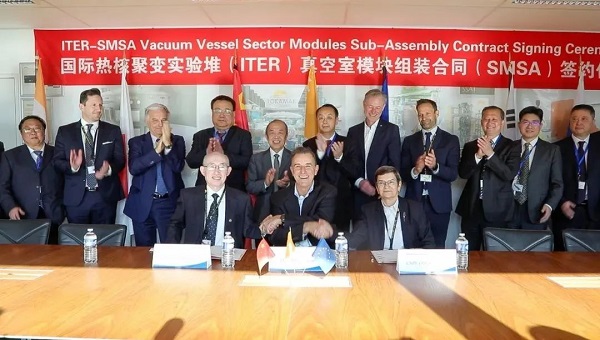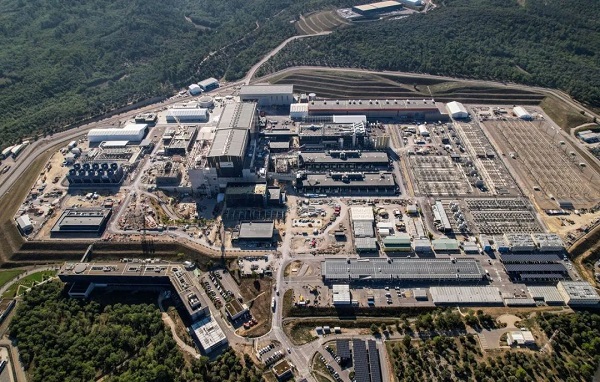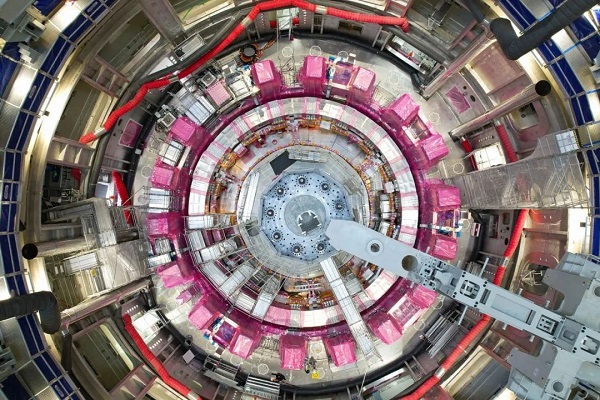On Feb 29, the International Thermonuclear Experimental Reactor (ITER) organization signed the contract for assembling the vacuum chamber module with CNPE of China National Nuclear Corporation (CNNC). This is the second time that China has undertaken the installation task of the ITER's core equipment, contributing wisdom and strength to the progress of this project. Pietro Barabaschi, the ITER director-general; Dong Guangli, consul general of China in Marseille; and Shen Yanfeng, vice president of CNNC, among other delegates, attended the signing ceremony.

The ITER project is currently the world's largest and most far-reaching international science project, carrying people's aspirations for peaceful utilization of nuclear fusion energy. It aims to simulate the nuclear fusion process that powers the sun, exploring the commercial feasibility of controlled nuclear fusion technology. The ITER is actually a Tokamak capable of generating large-scale nuclear fusion reactions, also known as the world's largest "artificial sun". It is jointly implemented by seven countries including China, India, and the United States. China joined this project in 2006 and has undertaken manufacturing tasks for 18 procurement packages since 2008.

CNNC has been actively involved in the development of the world's largest "artificial sun". In September 2019, CNPE of CNNC signed the contract for TAC-1 installation with the ITER, marking the beginning of China's deep involvement in the core equipment installation of the Tokamak device of the experimental reactor. Throughout the installation, CNNC has adhered to the spirit of international cooperation, ensuring safe production and overall quality control and gaining international recognition.

The assembly of the vacuum chamber module is a critical task for the ITER's most important equipment at present and holds great importance for the entire project. The whole module consists of three layers: the 40° vacuum vessel sectors, cryostat thermal shield, and toroidal field coils. Due to its enormous size, it has been divided into nine sectors for installation, each completed separately, with a total scheduled installation period of 35 months. The assembly work won in this bid involves integrating the cryostat thermal shield and toroidal field coils onto the vacuum vessel sectors, and then lifting the entire assembly into the Tokamak pit.